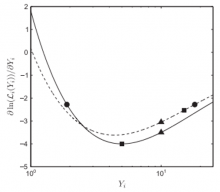
Abstract
Calculating the expected number of misclassified outcomes is a standard problem of particular interest for rare-event searches. The Clopper–Pearson method allows calculation of classical confidence intervals on the amount of misclassification if data are all drawn from the same binomial probability distribution. However, data is often better described by breaking it up into several bins, each represented by a different binomial distribution. We describe and provide an algorithm for calculating a classical confidence interval on the expected total number of misclassified events from several bins, based on calibration data with the same probability of misclassification on a bin-by-bin basis. Our method avoids a computationally intensive multidimensional search by introducing a Lagrange multiplier and performing standard root finding. This method has only quadratic time complexity as the number of bins, and produces confidence intervals that are only slightly conservative.